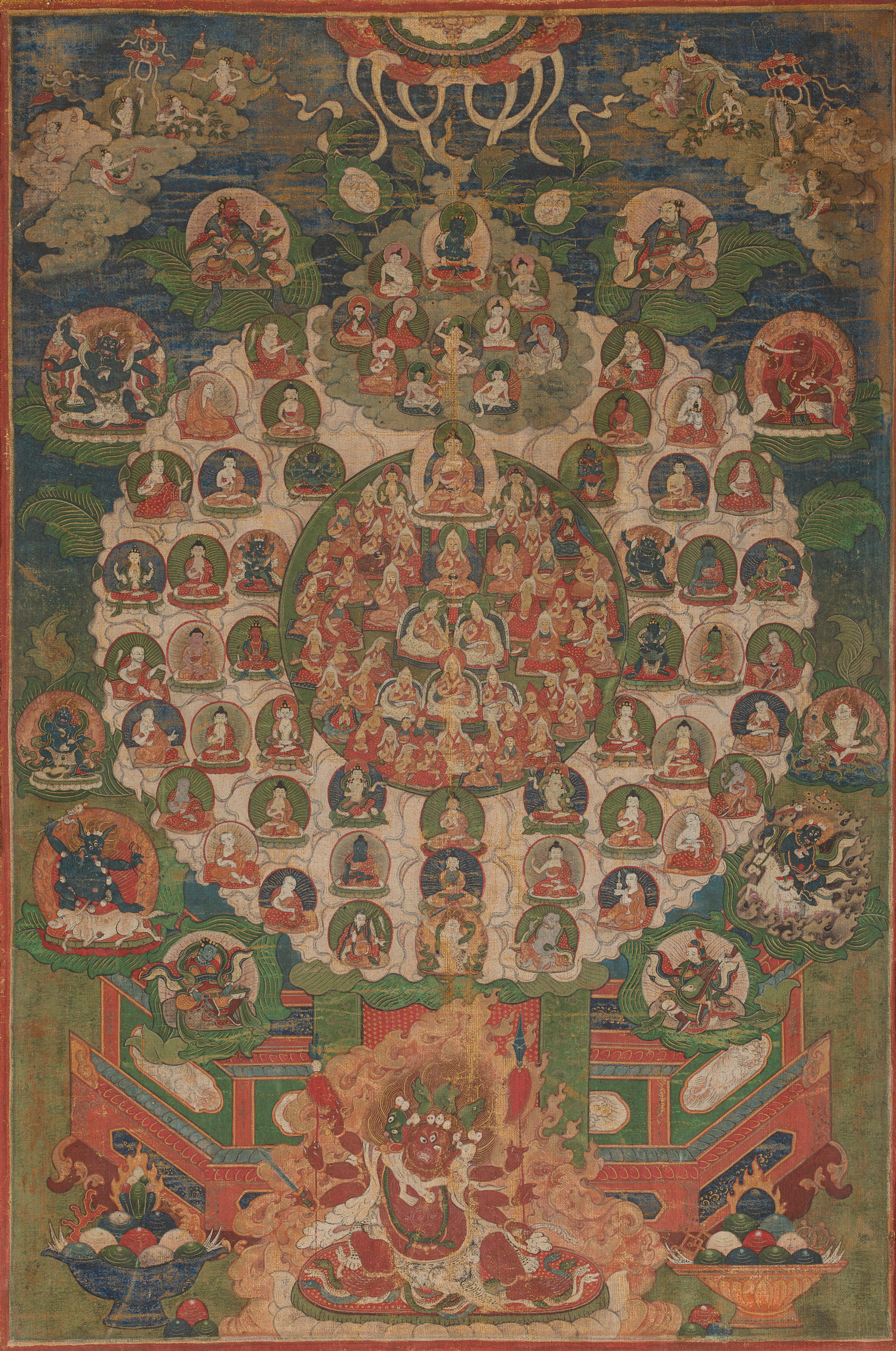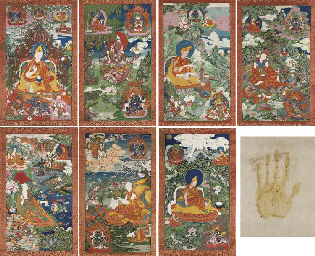[Four Indian Kings of Canada] John Simon after John Verelst, c.1755 VERELST, John (1648-1734, artist) and SIMON, John (1675-c.1755; engraver). [Four Indian Kings.] London: for John Bowles & Son, [c.1755?]. The famous "Indian Kings" series of prints after paintings by John Verelst, second state. In the aftermath of an embarrassing military failure at Montreal, Colonial official Peter Schuyler arranged an embassy of four Native dignitaries—three from the Haudenosaunee, also known as the Iroquois Confederation, and one Mahican man—to travel to London seeking support from the English crown against France and her Native allies. To mark the occasion of their visit in 1710 to the Court of St. James, Queen Anne commissioned Dutch artist John Verelst to paint their portraits (now part of the collections of Library and Archives Canada), and the images were soon in wider circulation in the form of the present mezzotints by John Simon. Although the four men were presented to the London court as Kings representing their tribes, the Haudenosaunee was officially neutral in the conflict between the two European powers. "The portraits’ remarkable detail has made them extraordinarily useful in understanding Mohawk and Mahican culture, but the four men were almost certainly not Tribal leaders as Schuyler claimed. They appear to have been four young men who, having formed friendly relations with British traders and officials, agreed to participate in a calculated effort to gain support from the Crown for military efforts against the French" (Pictured to the Life). "The primary purpose of Verelst’s portraits was to underscore these Native Americans’ purported status and authority," something Verelst tried to achieve by modeling them on the conventions of Irish and Scottish portraiture, which was a familiar way of depicting wild "otherness" to English audiences (Muller). The prints made their way across the Atlantic in time for a conference held in Albany in August 1711 to enlist Native support for another march on Montreal. Each of the Five Nations was presented with a complete set of prints, with one series given for the express purpose of being displayed in the longhouse at Onondaga—all in an effort to promote the potential benefits of an English-Iroquois alliance. “Verelst’s portraits played a key role in forging and maintaining colonial and imperial relations. They could do so because of their nearly universal readability, which allowed them to speak simultaneously, as it were, to individuals from different constituencies, including the queen’s ministers in London, North American colonists, the Iroquois and their different factions, and the French and their Indian allies” (ibid.). Chaloner Smith, p.1095, no.84 (Indian Kings); Pictured to the Life 35; see also Kevin R. Muller, “From Palace to Longhouse Portraits of the Four Indian Kings in a Transatlantic Context,” American Art, Vol. 22, No. 3 (Fall 2008), p. 47. Four mezzotint engravings, 355 x 256mm each to plate mark (discreet paper repairs around edges of plate mark in plate 1). Individually matted and housed in a custom half morocco box.
[Four Indian Kings of Canada] John Simon after John Verelst, c.1755 VERELST, John (1648-1734, artist) and SIMON, John (1675-c.1755; engraver). [Four Indian Kings.] London: for John Bowles & Son, [c.1755?]. The famous "Indian Kings" series of prints after paintings by John Verelst, second state. In the aftermath of an embarrassing military failure at Montreal, Colonial official Peter Schuyler arranged an embassy of four Native dignitaries—three from the Haudenosaunee, also known as the Iroquois Confederation, and one Mahican man—to travel to London seeking support from the English crown against France and her Native allies. To mark the occasion of their visit in 1710 to the Court of St. James, Queen Anne commissioned Dutch artist John Verelst to paint their portraits (now part of the collections of Library and Archives Canada), and the images were soon in wider circulation in the form of the present mezzotints by John Simon. Although the four men were presented to the London court as Kings representing their tribes, the Haudenosaunee was officially neutral in the conflict between the two European powers. "The portraits’ remarkable detail has made them extraordinarily useful in understanding Mohawk and Mahican culture, but the four men were almost certainly not Tribal leaders as Schuyler claimed. They appear to have been four young men who, having formed friendly relations with British traders and officials, agreed to participate in a calculated effort to gain support from the Crown for military efforts against the French" (Pictured to the Life). "The primary purpose of Verelst’s portraits was to underscore these Native Americans’ purported status and authority," something Verelst tried to achieve by modeling them on the conventions of Irish and Scottish portraiture, which was a familiar way of depicting wild "otherness" to English audiences (Muller). The prints made their way across the Atlantic in time for a conference held in Albany in August 1711 to enlist Native support for another march on Montreal. Each of the Five Nations was presented with a complete set of prints, with one series given for the express purpose of being displayed in the longhouse at Onondaga—all in an effort to promote the potential benefits of an English-Iroquois alliance. “Verelst’s portraits played a key role in forging and maintaining colonial and imperial relations. They could do so because of their nearly universal readability, which allowed them to speak simultaneously, as it were, to individuals from different constituencies, including the queen’s ministers in London, North American colonists, the Iroquois and their different factions, and the French and their Indian allies” (ibid.). Chaloner Smith, p.1095, no.84 (Indian Kings); Pictured to the Life 35; see also Kevin R. Muller, “From Palace to Longhouse Portraits of the Four Indian Kings in a Transatlantic Context,” American Art, Vol. 22, No. 3 (Fall 2008), p. 47. Four mezzotint engravings, 355 x 256mm each to plate mark (discreet paper repairs around edges of plate mark in plate 1). Individually matted and housed in a custom half morocco box.


.jpg)









.jpg)
.jpg)
.jpg)
Testen Sie LotSearch und seine Premium-Features 7 Tage - ohne Kosten!
Lassen Sie sich automatisch über neue Objekte in kommenden Auktionen benachrichtigen.
Suchauftrag anlegen